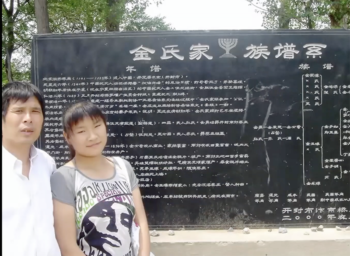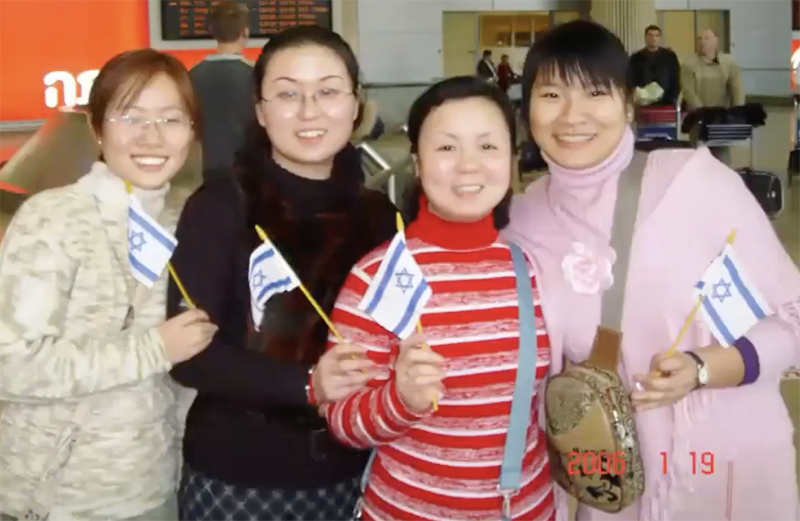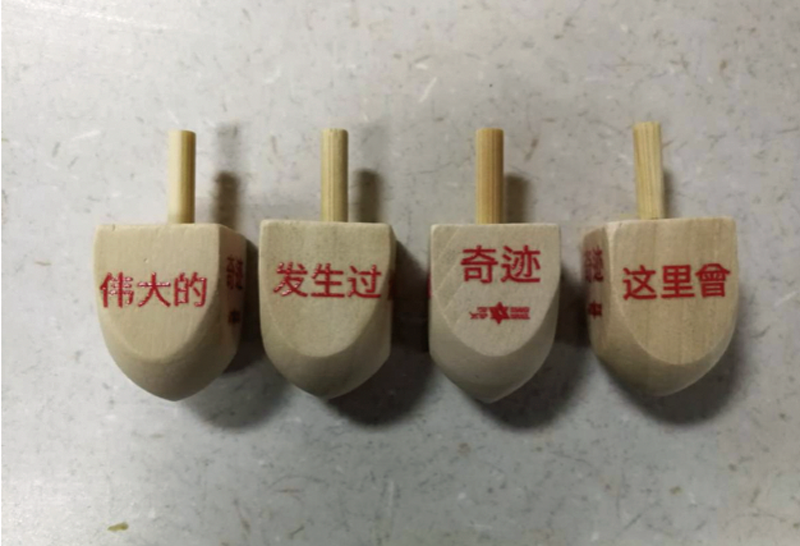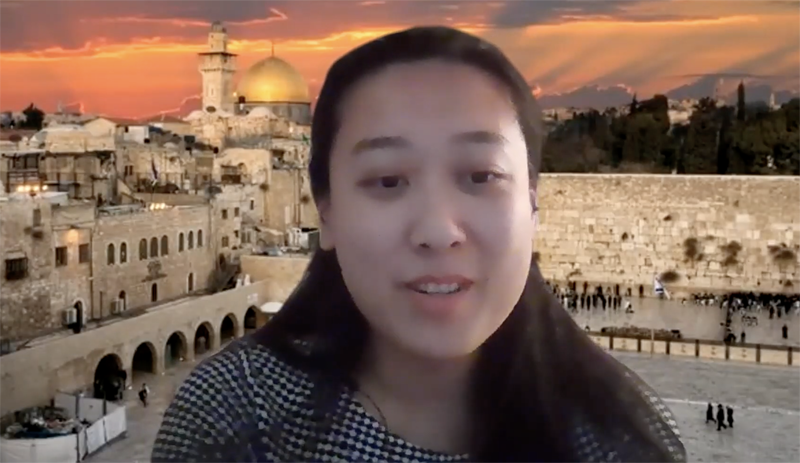By Mark Ellis –

In the 7th or 8th century A.D., Iraqi or Persian Jewish merchants traveling along the Silk Road settled in Kaifeng, one of the Eight Ancient Capitals of China. In 1163 a large synagogue was built, and today the city has the largest surviving Jewish community in China.
“At its peak, during the Ming Dynasty, Kaifeng had as many as 5,000 Jews,” according to Michael Freund, founder of Shavei Israel.
Freund noted that widespread intermarriage and assimilation eventually led to the synagogue’s decline. It was destroyed by floods in the mid-1800s and the community’s last rabbi died about the same time.
There are currently an estimated 1,000 people in Kaifeng who are identifiable via genealogical records as descendants of the city’s Jewish community.

“The Chinese Jews of Kaifeng are a living link between China and the Jewish people,” Freund observed.
In honor of Hanukkah, Shavei Israel designed and produced hundreds of Dreidels with Mandarin lettering for the Chinese Jews living there.

A Dreidel is a spinning top used by children in a game played during Hanukkah. Each Dreidel has four sides, each marked with a different Hebrew letter (nun, gimel, hay and shin).
The letters on the dreidel are the first letters in a Hebrew phrase meaning “A Great Miracle Happened There” (“There” being the land of Israel).
“Despite the severe restrictions imposed on them by the Chinese government in recent years, the Chinese-Jewish descendants are anxious to learn more about the heritage of their forefathers and we hope these Chinese-language Dreidels that we’ve prepared for them will give them a dose of happiness and light during Chanukah,” Freund said.

Hanukkah commemorates a time in the 2nd Century B.C. when a small group of pious Jews, who called themselves the Maccabees, managed to defeat the Greek army and liberate Jerusalem and the Second Temple in Jerusalem.
“The miracle of Hanukkah came when it was time to light the Temple lampstand, called the menorah. The Jews could only find one jar of pure olive oil required for lighting the lamp — only enough to last one day. The Jews decided to light the menorah anyway, and miraculously, the oil lasted for eight days, long enough for more olive oil to arrive,” Rabbi Yechiel Eckstein noted in the Christian Post.
The next great miracle for the Jewish people happened more than a hundred years later, with the arrival of Messiah Jesus. In Scripture Hanukkah is referenced in John 10:22 as the Feast of Dedication. Jesus celebrated the miracle Himself and the re-dedication of the temple.
After 400 years of silence between the Testaments, The Light of the World, Jesus, appeared, offering hope to a dark world.
By the way of the sea, beyond the Jordan,
In Galilee of the Gentiles.
The people who walked in darkness
Have seen a great light;
Those who dwelt in the land of the shadow of death,
Upon them a light has shined. (Isaiah 9:1-2)



